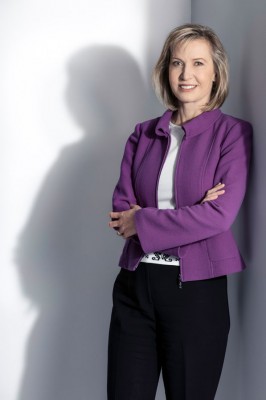
CIO & Senior VP of Operations
Company: McAfee
Location: Santa Clara, CA
Operations Insight: “We are probably the most transparent IT organization that you’ll find, and that helped to quickly break through some of the distrust that once existed across our teams.”
A few months after I joined McAfee as head of operations, the results of our employee-engagement survey came out. I didn’t know scores went that low. Forty-seven percent engagement within operations was a real wake-up call and an indication of the identity crisis we were having. Our peers perceived us as unreliable, and the team itself felt defeated. We spent too much time focusing on the day-to-day with no time for value-added activities. Our core systems were obsolete, and we lacked cross-function collaboration as well as a road map for improvement.
There were problems in need of solving—but our talent wasn’t one of them. Our goal is to have a well-functioning organization that keeps driving new ideas into the business, and that starts with people. Having previous experience with building strong teams at Cisco and AT&T, I could see we needed to achieve excellent employee engagement as a foundation. If employees aren’t excited to be there, they’ll never be great. We had good employees who knew what needed to get done; we just weren’t leveraging their knowledge effectively. You need to bring them in as part of the solution development, and not rely on just a few managers guessing at the answers.
We asked for volunteers to address the top pain points in the organization and assigned program leads for each. Organically, people were able to interact more broadly among the functions, and by the end of the year, our organization’s engagement scores jumped nearly 30 percent. That was a big win, but the operations team had yet to build a more positive reputation in the eyes of their peers as enablers of business.
McAfee has a complex business with many business models and corporate functions challenging operations and IT to support multiple, disparate businesses. We have to be agile in that support. There is a diverse array of consumer, enterprise, software, hardware, SaaS, and functional areas with different priorities, requiring different levels of change—made even more challenging with multiple business models within each area. The reality for McAfee was—and is increasingly across businesses and industries—automate or get left behind.
I wouldn’t have wished on any company what we had to do in 2012. In one year, we tackled an ERP upgrade and new platforms for ordering, CRM, pricing, finance, and partner interactions. I’ve never seen a company try to do so much in one year, but the best thing we had going for us was the way we pulled together across the business functions. The senior members from each of the business functions agreed on the biggest initiatives, as well as a road map that aligned resources from every team. It was a critical step in finally earning a winning project success rate. Once we were able to reliably manage the business with improved processes and technology that support high-volume spikes, it gave us the legitimacy to take another step forward as enablers across the functions for effective pricing, product bundling, and new business models. With improved team strategy, we were able to automate manual functions and ensure we had the right amount of resources working on the right projects, giving us a high level of ownership and engagement.
Once we had our priorities straight, we needed a core of leaders to carry them out. In December of 2011, prior to our major overhaul effort, I was given the joint leadership of McAfee operations and IT. This meant that I had two significant teams—highly interdependent upon one another—to shape a dual leadership team that would encourage and foster employee engagement.
IT had six vice presidents at the end of 2011. By December 2012, there were only three. Focusing on consolidating around strong leaders has made a huge difference in the culture and performance. To simplify, we identified our three centers of gravity and assigned a vice president to each: global security, solution delivery, and IT operations. I looked for change agents in each area: strategic, hands-on leaders.
As we worked through that first year’s road map, and were able to knock out each project, the team was feeling better and better about itself. By the beginning of Q4 2012, we were in a position to start our long-term planning efforts—defining our vision, strategies, and key execution areas for the next two to three years. The vision for IT became driving growth through empowerment. For operations, it was enabling the platform. Both teams now had similar paths for engagement and opportunity moving forward. Both were inspired and highly motivated by the goal of making McAfee the best security platform on the market.
Now that efficiency has become the standard for our team, on the operations side, we’re using our broad set of capabilities to look forward and be explicit about where we want to focus our time. We’ve transitioned from simply turning the crank to strategically analyzing data and presenting options for improvement.

